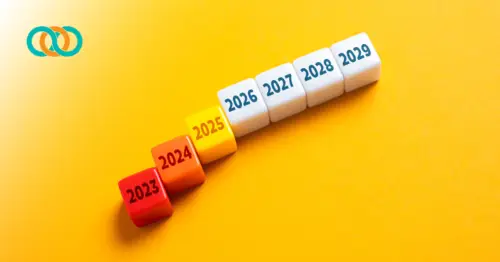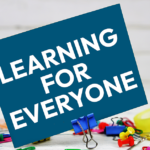Leadership development doesn’t look like it did five years ago. Gone are the days when leadership meant sending someone to a workshop for two days and hoping for transformation. Today, organizations are rethinking how they grow their leaders. They’re moving away from one-off events and toward holistic experiences that actually change behavior, not just job titles.
We recently sat down with learning and development leaders from multiple industries to talk about what’s changed in leadership development, and what still needs to change. What emerged is a new blueprint. One that’s tech-enabled, deeply integrated with business strategy, and more focused on performance than promotion.
Here’s what’s new in leadership development programs and what you should consider whether you’re designing leadership programs or investing in them.
- Move from Events to Experiences
- Integrate AI as a Thought Partner
- Tie Programs to Business Strategy
- Reframe Expectations about Promotion
- Focus on Behavior Change
- Start with Self-Awareness
- 70-20-10 Model
- Create a Culture for Development of Others
1. Move From Events to Experiences
A major shift is the move from one-time training events to longer, blended leadership journeys.
In the past, leadership development might have meant flying in managers for a workshop or having them attend a two-day conference. Now, programs are often five to six months long. They include live VILT sessions, coaching, assessments, stretch assignments, and asynchronous learning.
The shift is clear: Organizations want to invest in leadership journeys, not just leadership moments. And it’s paying off. When leaders can apply what they’re learning over time, the chances of real behavior change go way up.
2. Integrate AI as a Thought Partner
AI is not replacing leadership development, it’s reshaping how it happens.
Many L&D professionals now use AI tools to streamline administrative tasks, spark creativity, and accelerate development. Whether it’s using ChatGPT to brainstorm learning paths, Microsoft Copilot to draft emails, or LinkedIn Learning’s AI to customize content, AI is now a daily part of the workflow.
There’s also growing interest in AI-driven roleplays and simulations. Tools like Ability and Unboxed are helping L&D teams create scalable, practice-based coaching experiences that don’t require a human roleplay partner.
As one L&D leader put it, “We’re not using AI to replace the work, it’s more like a co-pilot. It helps us get the ideas out faster and focus on what matters.”
Download Your Copy of Agentic AI vs. Generative AI – What’s the Difference?
3. Leadership Programs Are Tied to Strategy—Not Just HR
One of the strongest trends in leadership development today is tighter alignment with business strategy.
Leadership competencies are no longer just sitting in an HR file. They’re being used to create success profiles, design career pathways, and inform succession plans. And smart organizations are tying leadership goals directly to business goals.
One leader described a cascading approach where the CEO enters their development goals first, and every leader beneath them aligns their goals upward. Not only does this foster alignment, but it also brings visibility and clarity.
This isn’t just about better performance, it’s about making leadership development part of the operating rhythm of the business.
4. Reframe Expectations About Promotion
One of the most important mindset shifts is that development does not always equal a promotion.
In the past, many employees saw leadership development programs as the golden ticket to a new job title. Now, organizations are being much more transparent stating that development is about getting better in your current role, not necessarily moving up.
In addition, leaders are being taught to reframe conversations with their teams. “What does ‘next’ look like for you?” doesn’t have to mean “up the ladder.” It might mean leading cross-functional projects, taking on the role of mentor, or becoming a subject matter expert.
This reframing is helping manage expectations and reduce disappointment when promotions don’t follow development programs.
5. Focus on Behavior Change
There’s a growing recognition that real leadership growth comes from practice, not just knowledge. Several learning leaders shared frustration that they’re still fighting the “check the box” mentality. Stakeholders ask for a course instead of asking, “What behavior are we trying to change?”
This shift from “learning event” to “behavioral outcome” is long overdue. Programs are now expected to include practice, reflection, and reinforcement. That could look like coaching, manager-led conversations, or AI-supported simulations.
It also means leadership development must include performance consulting. What are we solving for? What’s the actual gap?
6. Self-Awareness Is a Starting Point
Leadership development is becoming much more personal. Assessments like CliftonStrengths, DISC, and 360s are still widely used but now they’re being followed by deeper conversations about shadow strengths, derailers, and personal impact. One organization created a “Strengths and Shadows” session to help leaders explore how overused strengths might hinder team performance.
These conversations give leaders better tools for engagement and helping them build trust within their teams. But the message was clear: Assessments alone aren’t enough. They need to be paired with facilitated reflection and follow-through.
7. The 70-20-10 Model
We’ve all heard of the 70-20-10 model: 70% learning from on-the-job experience, 20% from interaction with others, 10% from formal training events. Now, organizations are starting to make it real.
Some are creating experience libraries. These are catalogs of key stretch assignments that align with competencies. Others are building success profiles that include critical experiences, observable behaviors, and interview questions.
One company shared that it uses these profiles not just for hiring, but for internal mobility, too. “We’ve identified the four or five key experiences a person needs before they can succeed in a role. That shapes our talent decisions.”
8. Culture of Development of Others
One challenge echoed by all the learning leaders? Getting managers to take responsibility for development. Development planning, goal setting, and coaching. No longer do these site only with HR or L&D. Leaders must be active participants in the development of their team members.
Some organizations are offering IDP (Individual Development Plan) workshops just for leaders. Others are coaching leaders on how to set SMART goals with their teams and give meaningful feedback.
The takeaway? The best leadership development strategies are those that empower every leader to be a developer of others.
The Future of Leadership Development Is Now
Leadership development has grown up. Today, it’s about capability. It’s not about checking a box; it’s about changing behavior. It’s not about taking a course; it’s about developing skills that drive business results.
Today’s leadership development programs are:
- Tech-enabled
- Behavior-based
- Business-aligned
- Experience-driven
- Scalable across roles and regions
And the best part? They’re human-centered. At the heart of all this change is the belief that leadership is a set of skills. Leadership skills can be taught, practiced, and refined.
Download Your Copy of 10 Ways L&D Departments Are Using AI In 2025
Ready to Work with Us?
Does your L&D team have more projects than people? TrainingPros has been named a Top 20 Staffing Company internationally by Training Industry, and recognized as a Smartchoice® Preferred Provider by Brandon Hall Group for 2025. We’re also proud to be named a Champion of Learning by the Association for Talent Development (ATD)—an international honor that reflects our dedication to excellence in corporate learning. These accolades underscore TrainingPros’ unwavering commitment to delivering high-quality, tailored training solutions.
If your projects need instructional designers, virtual classroom producers, facilitators, or other L&D consultants for your leadership development design projects, reach out to one of our industry-expert relationship managers today.
When you have more projects than people™, let TrainingPros find the right consultant to start your project with confidence. Schedule a consultation today.
- 1share
- LinkedIn0
- Twitter0
- Facebook0
- Love This1











